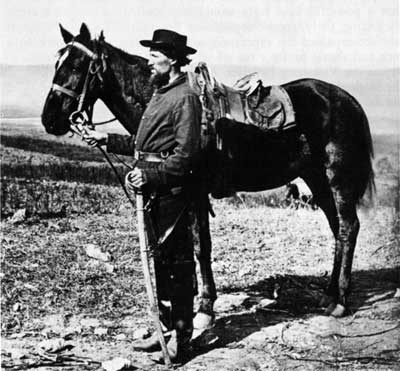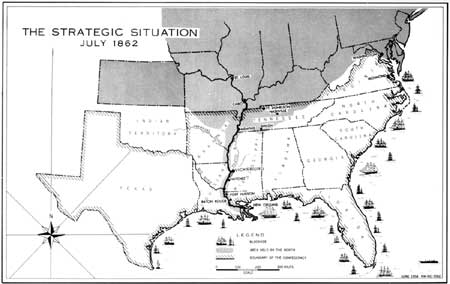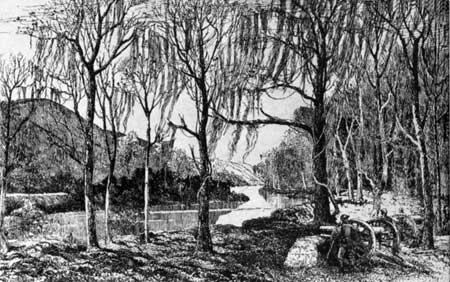|
VICKSBURG National Military Park |
 |

"Billy Yank." A volunteer soldier of the Union.
Courtesy Library of Congress.
THE FIRST MOVES AGAINST VICKSBURG. David Farragut, first admiral of the United States Navy, early in May 1862, headed his Western Gulf Squadron of oceangoing vessels up the Mississippi. In a spectacular engagement he passed the forts protecting New Orleans and captured the South's largest port city. Proceeding 400 miles up river, Farragut received the surrenders of Baton Rouge, capital of Louisiana, and Natchez, Miss., arriving before Vicksburg on May 18, just 1 year before Grant's army invested the city from the rear. At the same time, Flag Officer C. H. Davis was moving down the Mississippi River from the north, commanding a flotilla whose striking power was largely provided by a ram fleet under Col. Charles Ellet, Jr., and the seven "Pook Turtles"—ironclad gunboats, built on the Northern rivers, which mounted 13 guns in an armored casemate resting on a flat-bottomed hull.
After capturing Memphis in June 1862 and completely destroying the Confederate fleet of converted river steamboats, Davis pushed south ward and on July 1 dropped anchor beside Farragut's fleet just north of Vicksburg. All of the Mississippi River was now in Union possession, except for a section at and below Vicksburg.
The batteries of Vicksburg had been passed for the first time on June 28. On that day Farragut blasted the city and its defenses with broadsides from his ships and a devastating fire from Comdr. David Dixon Porter's mortar boats in an unsuccessful attempt to reduce the city by naval attack. It was clearly evident from this experience that a powerful land force would be required to capture fortress Vicksburg. Only 3,000 troops under Brig. Gen. Thomas Williams had accompanied the expedition, and they were put to work with pick and shovel to dig a cut off which might permit river traffic to bypass the Vicksburg batteries. As the fleets idled above Vicksburg, the sweltering monotony was spectacularly interrupted by the short but battle-filled career of the Confederate ironclad ram Arkansas, which performed at Vicksburg one of the great feats of arms on the Western waters.
The energy and skill of Lt. Isaac N. Brown, who commanded the Arkansas, had enabled the ram to be readied for action despite almost impossible handicaps in securing materials. Routing the Union vessels sent to apprehend her, the venturesome man-of-war stood for the two Federal fleets lying at anchor just above Vicksburg and, with guns blazing, passed entirely through the massed flotillas to safety under the Vicksburg batteries. Here the Arkansas withstood all attempts to destroy her and presented a formidable threat to Farragut's wooden ships.

(click on image for an enlargement in a new window)
By the end of July, conditions indicated to Farragut that a withdrawal from Vicksburg was necessary. In the hot, fetid atmosphere of the river the disease rate had so increased that only 800 of Williams' 3,000 men were fit for duty. At the same time, the steadily falling waters threatened to maroon his deep-draught vessels. Farragut, with Williams' troops aboard, moved down river to New Orleans, while Davis steamed up river, leaving Vicksburg unopposed. The initial expedition against Vicksburg had failed.

Scene of Sherman's assault against the Bluffs at
Chickasaw Bayou.
From Battles and Leaders of the Civil
War.
With the Union withdrawal, communications between the sections of the Confederacy east and west of the Mississippi, which had been temporarily curtailed, were resumed. From Vicksburg to Port Hudson, a distance of 250 miles by river, the Mississippi was now in Confederate hands. Into the Mississippi, just above Port Hudson, emptied the Red River which drained much of the trans-Mississippi South, and down which great stores of food were being floated to supply the armies of the Confederacy. It was imperative for the North to close off this important supply route.

|
|
Last Modified: Mon, Dec 2 2002 10:00:00 am PDT |


